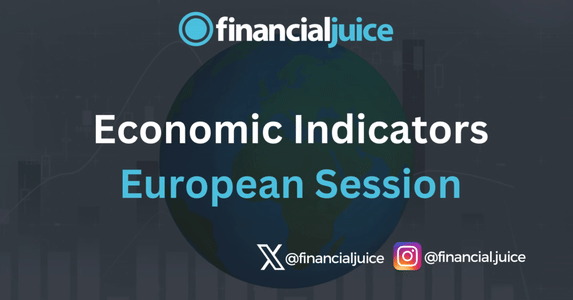
Week Ahead: Economic Indicators (EU)
Hey, Traders!
For the April 8th week, here is a list of all of the major economic indicators being released during the EU Session, with a brief synopsis of what they represent and what to possibly expect from the markets in reaction.
Monday 8th April
02:00 ET
German Industrial Production
Industrial production measures the physical output of the nation’s factories, mines and utilities. Data are collected from companies in the sector with fifty or more employees and include mining and quarrying, manufacturing, energy and, in contrast to its Eurozone counterpart, construction.
Investors want to keep their finger on the pulse of the economy because it usually dictates how various types of investments will perform. The stock market likes to see healthy economic growth because that translates to higher corporate profits. The bond market prefers more subdued growth that will not lead to inflationary pressures. By tracking economic data such as industrial production, investors will know what the economic backdrop is for these markets and their portfolios.
What to expect:
A higher than expected reading should be taken as positive/bullish for the EUR, while a lower than expected reading should be taken as negative/bearish for the EUR.
Thursday 11th April
08:15 ET
ECB Interest Rate
The European Central Bank (ECB) sets monetary policy for all members of the Eurozone. The highest decision-making body is the Governing Council which comprises the six members of the Executive Board and the 19 presidents of member central banks. Policy meetings take place roughly every six weeks but, due to the sheer number of participants, a rotation system has been introduced so that the total number of votes is capped at twenty-one.
The most traditional operations are what we call the Main Refinancing Operations (MRO). When liquidity is needed, a bank can borrow directly from the ECB. Every week, banks of the Eurozone go (virtually) to the ECB desk to borrow money at the refinancing rate fixed by the ECB. The loan is made under the form of a Repurchase Operation (Repo). The bank sells security assets to the ECB and borrows money. One week later, the bank gives the money back with interest to the ECB and recovers its security assets.
What to expect:
As in the United States, European market participants speculate about the possibility of an interest rate change at these meetings. If the outcome is different from expectations, the impact on European markets can be dramatic and far-reaching. The rate set by the ECB serves as a benchmark for all other interest rates in the Eurozone.
The level of interest rates affects the economy. Higher interest rates tend to slow economic activity; lower interest rates stimulate economic activity. Either way, interest rates influence the sales environment. In the consumer sector, few homes or cars will be purchased when interest rates rise. Furthermore, interest rate costs are a significant factor for many businesses, particularly for companies with high debt loads or who have to finance high inventory levels. This interest cost has a direct impact on corporate profits. The bottom line is that higher interest rates are bearish for the stock market, while lower interest rates are bullish.
Friday 12th April
02:00 ET
UK Manufacturing Production
Manufacturing Production measures the change in the total inflation-adjusted value of output produced by manufacturers. Manufacturing accounts for approximately 80% of overall Industrial Production.
Manufacturing output is the preferred number rather than industrial production which can be unduly influenced by electrical generation and weather. The manufacturing index is widely used as a short-term economic indicator in its own right by both the Bank of England and the UK government. Market analysts also focus on manufacturing and its sub-sectors to get insight on industry performance.
What to expect:
A higher than expected reading should be taken as positive/bullish for the GBP, while a lower than expected reading should be taken as negative/bearish for the GBP.
UK GDP
Gross Domestic Product (GDP) measures the total value of a country’s industrial output over a given period. It consists of the aggregate domestic production of goods and services by individuals, businesses, and government.
GDP data is available in dollar or index form. U.K. GDP QoQ is the comparison of growth from one fiscal quarter to the next, represented in a percentage format.GDPQoQ is a leading indicator of U.K. economic health. High levels of GDP growth are viewed as being positive for U.K. indices as well as the GBP.
What to expect:
Low levels of growth are negative to most asset classes and are common to recessionary cycles. The Bank of England (BOE) places a great deal of emphasis on monthly and yearly GDP. Robust growth is often a prelude to monetary tightening, while stagnate levels provide an environment conducive to Quantitative Easing (QE).Traders monitor GDP (MoM) releases closely. Abnormal reports may cause rapid buying or selling of the U.K. indices or GBP. Currency, equities, and commodities markets all exhibit enhanced degrees of volatility surrounding the GDP release.
German HICP
The Harmonized Index of Consumer Prices is an index of consumer prices calculated and published by Destatis, on the basis of a statistical methodology that has been harmonized across all EU member states. HICP is a measure of prices used by the Governing Council of the EU to define and assess price stability in the euro area as a whole in quantitative terms.
What to expect:
By tracking inflation, whether high or low, rising or falling, investors can anticipate how different types of investments will perform. Over the long run, the bond market will rally (fall) when increases in the CPI are small (large). The equity market rallies with the bond market because low inflation promises low interest rates and is good for profits.
Good luck this week traders!




